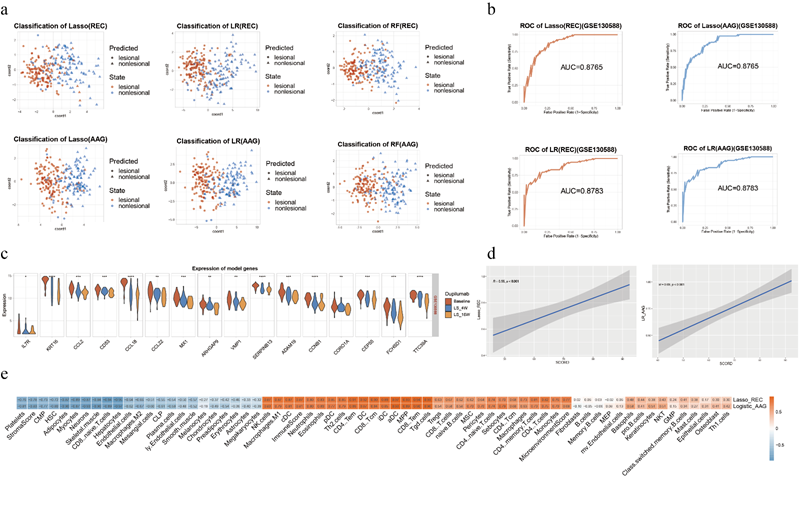Machine learning algorithms for diagnostic and therapeutic evaluation for atopic dermatitis
Published 23 May, 2023
Atopic dermatitis (AD) is a chronic inflammatory disease most commonly seen in children and adults. The condition seriously affects patients’ quality of life. Its prevalence rate worldwide is 7-30% in children and 1-10% in adults. Evidently, reliable and accurate evaluation methods are necessary for early diagnosis and individual treatment of AD.
The use of machine learning (ML) in medical fields has increased substantially in recent years. ML helps detect and classify diseases, improve predictions, and personalize treatment. ML is mostly used in dermatology to identify skin lesions or histopathologic images, such as those for vitiligo and psoriasis, but very few models at the molecular level have been reported for AD—until recently, when Songjiang Wu, a PhD candidate in dermatology from Third Xiangya Hospital at the Central South University in China and his co-authors established several relatively stable and reliable diagnosis and efficacy evaluation prediction models for AD based on ML algorithm.
The researchers developed six prediction models for AD, using publicly available RNA transcriptome data from AD lesions and non-lesions with three different ML algorithms; lasso, linear regression (LR) and random forest (RF). The models displayed excellent performance in distinguishing between AD lesions and non-lesions (AUC >0.8).
Those samples which received biological therapy showed a positive correlation of the model score with SCORAD (“SCORing Atopic Dermatiti”s) and a negative correlation with treatment duration, indicating an improving trend.
"These results indicate the potential of the models to evaluate treatment efficacy, especially for biological agents and small molecule drugs; however, due to the small sample size and lack of sample quality, the correlation coefficients between the two models and SCORAD were not high enough,” explained Wu.
The team published their findings in the KeAi journal Fundamental Research.
According to the corresponding authors Qinghai Zeng and Jing Chen, ML-based models showed favorable prediction performance in AD diagnosis and treatment efficacy, suggesting new options for early diagnosis and intervention.
Going forward, the team, will collect patient samples for verification and evaluation of the stability of the models.

Image: Six models were established using two batches of model genes(REC and AAG), and along with three machine learning algorithms: LASSO, linear regression (LR), and random forest (RF): a. The models can accurately identify AD lesions in training data; b. LASSO (REC and AAG) and LR (REC and AAG) models showed good classification performed in the testing datasets; C. all genes displayed a significant time-dependent downregulation in the LASSO and LR models with Dupilumab treatment; c. all genes displayed a significant time-dependent downregulation in the LASSO and LR models with Dupilumab treatment; d. LASSO(REC) and LR(AAG) model scores were positively correlated with SCORD; e. Correlation between LASSO (REC) and LR (AAG) model scores and immune cell infiltration.
###
Contact the corresponding author: Qinghai Zeng, zengqinghai@csu.edu.cn
Journal: Fundamental Research
DOI: https://doi.org/10.1016/j.fmre.2023.02.021
See the Article: Machine learning-based prediction models for atopic dermatitis diagnosis and evaluation